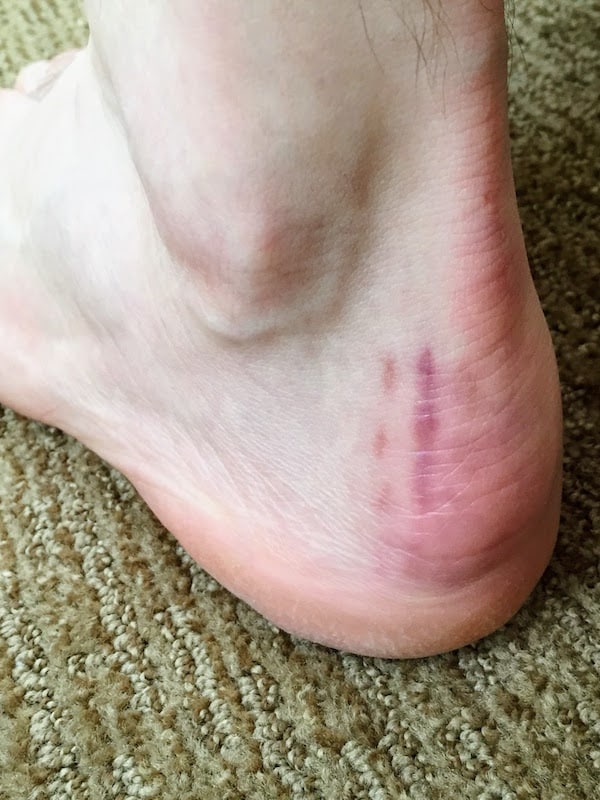The cost of stem cell therapy for plantar fasciitis the range can be between $3,000 and $10,000, can vary depending on several factors, including the location, the healthcare provider, the type of stem cells used, and any additional treatments or procedures involved. It’s important to note that stem cell therapy for plantar fasciitis is considered a regenerative treatment and may not be covered by insurance, as it is still a developing field.
On average, the cost of stem cell therapy for plantar fasciitis can range from several thousand dollars to tens of thousands of dollars. This cost typically includes the consultation, stem cell harvesting or acquisition, processing, and the procedure itself. Additional costs may arise if imaging studies, follow-up appointments, or supportive therapies are required.
Factors that Influence the Price of Stem Cell Therapy for Plantar Fasciitis
The price of stem cell therapy for plantar fasciitis can be influenced by several factors. Understanding these factors can help you better grasp the pricing structure associated with the treatment. Here are some key factors that can influence the cost of stem cell therapy for plantar fasciitis:
- Geographic Location: The cost of healthcare services, including stem cell therapy, can vary depending on the region or country where the treatment is being provided. Different healthcare systems, local regulations, and cost of living factors can contribute to price differences.
- Clinic Reputation and Expertise: Established and reputable clinics with experienced healthcare professionals may have higher fees due to their expertise and track record of successful treatments. The quality of care, facilities, and patient outcomes can play a role in determining the price.
- Treatment Protocol: The specific treatment protocol utilized by the clinic can impact the cost. Factors such as the number of stem cell injections, the type of stem cells used (autologous or allogeneic), and any additional procedures or therapies included in the treatment plan can affect the overall price.
- Stem Cell Source: The source of the stem cells can also influence the cost. Autologous stem cells, derived from the patient’s own body, may involve additional steps for harvesting and processing compared to allogeneic stem cells sourced from a donor. These differences can contribute to variations in the overall cost.
- Pre-treatment Evaluations and Imaging: Diagnostic evaluations, such as consultations, physical examinations, and imaging studies (e.g., MRI, ultrasound), may be necessary to assess the condition and determine the appropriate treatment plan. These pre-treatment evaluations can add to the overall cost of the therapy.
- Post-treatment Care and Follow-up: The inclusion of post-treatment care and follow-up appointments can influence the overall cost. This may involve monitoring progress, adjusting treatment plans if needed, and providing guidance for rehabilitation and recovery.
- Additional Services and Amenities: Some clinics may offer additional services, amenities, or personalized care packages that can affect the overall cost. These may include concierge services, private rooms, transportation arrangements, or access to specialized rehabilitation programs.
It is important to have a detailed discussion with the clinic or healthcare provider to understand the pricing structure and factors that contribute to the cost of stem cell therapy for plantar fasciitis.

Evaluating the Cost-effectiveness of Stem Cell Therapy vs. Traditional Treatments
Evaluating the cost-effectiveness of stem cell therapy compared to traditional treatments for a condition like plantar fasciitis involves considering both the financial costs and the overall outcomes and benefits. Here are some key points to consider when assessing the cost-effectiveness:
- Initial Treatment Cost: Stem cell therapy for plantar fasciitis can have a higher upfront cost compared to traditional treatments such as physical therapy, orthotics, or corticosteroid injections. This is due to factors like stem cell acquisition, processing, and the procedure itself. Traditional treatments may be more affordable in the short term.
- Long-term Costs: Consider the long-term costs associated with each treatment option. Traditional treatments may require ongoing sessions of physical therapy, regular use of orthotics, or repeated corticosteroid injections, which can add up over time. In contrast, stem cell therapy has the potential to provide longer-lasting benefits, reducing the need for repeated treatments.
- Treatment Efficacy: Evaluate the effectiveness of each treatment option. Research and clinical studies can help determine the success rates and outcomes of stem cell therapy compared to traditional treatments. Consider factors such as pain reduction, improved functionality, and long-term symptom relief when assessing treatment efficacy.
- Quality of Life: Assess the impact of each treatment on the quality of life. Stem cell therapy aims to address the underlying causes of plantar fasciitis, potentially providing more significant improvements in pain reduction and functional recovery. Consider the potential long-term benefits of stem cell therapy in terms of improved mobility, reduced reliance on pain medications, and overall quality of life.
- Time and Productivity: Consider the impact of treatment duration and downtime on productivity and daily activities. Traditional treatments may require frequent sessions or ongoing use of devices like orthotics, which can disrupt daily routines. Stem cell therapy may have a shorter overall treatment duration and potentially faster recovery, allowing for a quicker return to regular activities and productivity.
- Individual Considerations: Individual factors such as age, overall health, treatment preferences, and treatment goals should also be taken into account. Discuss with your healthcare provider to determine which treatment option aligns best with your specific circumstances and needs.
When evaluating the cost-effectiveness of stem cell therapy versus traditional treatments for plantar fasciitis, it is crucial to weigh the upfront costs against the potential long-term benefits and improved quality of life.
Navigating the Financial Aspect of Stem Cell Therapy
Navigating the financial aspect of stem cell therapy for plantar fasciitis can be a complex process. Here are some considerations and options to help you with insurance coverage and potential financial assistance:
- Insurance Coverage: Check with your health insurance provider to determine if stem cell therapy for plantar fasciitis is covered under your plan. Coverage for regenerative treatments like stem cell therapy can vary widely between insurance providers and policies. Some insurance plans may cover certain aspects of the treatment or specific indications, while others may not provide coverage at all.
- Pre-authorization and Documentation: If your insurance plan does provide coverage for stem cell therapy, you may need to go through a pre-authorization process. This typically involves submitting documentation from your healthcare provider, including medical records, imaging studies, and a detailed treatment plan. Pre-authorization helps determine the medical necessity and eligibility for coverage.
- Out-of-Pocket Costs: Even if stem cell therapy is covered by your insurance, there may still be out-of-pocket costs such as deductibles, co-pays, or co-insurance. Review your insurance plan documents to understand your financial responsibilities.
- Flexible Spending Accounts (FSAs) or Health Savings Accounts (HSAs): If you have an FSA or HSA, these accounts can be utilized to cover eligible medical expenses, including stem cell therapy. Check the guidelines of your specific account and speak with your financial advisor or employer for guidance on how to utilize these funds for the treatment.
- Clinical Trials and Research Studies: Participating in a clinical trial or research study may provide an opportunity to receive stem cell therapy at a reduced cost or even for free. These studies are designed to advance medical research and may have specific eligibility criteria.
- Financing Options: Some healthcare providers or clinics may offer financing options or payment plans to help manage the cost of stem cell therapy.
- Patient Assistance Programs: In certain cases, patient assistance programs or charitable foundations may provide financial assistance for individuals seeking stem cell therapy.
It is crucial to have open and transparent communication with both your healthcare provider and insurance company throughout the process. They can provide guidance, answer your financial questions, and help you navigate the complexities of insurance coverage and potential financial assistance options.

Exploring the Value of Stem Cell Therapy for Plantar Fasciitis Relief
Stem cell therapy has gained attention as a potential treatment for plantar fasciitis, offering a promising avenue for relief from this debilitating condition. Let’s explore the value that stem cell therapy can bring in alleviating the symptoms and promoting healing:
- Targeted Healing: Stem cells possess remarkable regenerative properties and can differentiate into various cell types. By injecting stem cells directly into the affected area of the plantar fascia, the therapy aims to promote targeted healing and tissue regeneration.
- Reduced Inflammation: Plantar fasciitis is often characterized by inflammation of the plantar fascia. Stem cells have the potential to modulate the immune response, reducing inflammation and promoting a healing environment.
- Enhanced Tissue Repair: Stem cells release growth factors and signaling molecules that stimulate the repair and regeneration of damaged tissues. This can accelerate the healing process, leading to improved function and pain relief.
- Potential Long-Term Relief: While traditional treatments may provide temporary relief, stem cell therapy aims to address the underlying cause of plantar fasciitis, potentially offering longer-lasting results and reducing the likelihood of recurrence.
- Non-surgical Approach: Stem cell therapy offers a non-surgical alternative to more invasive treatment options, such as corticosteroid injections or surgery. This can be particularly appealing for individuals seeking a less invasive and potentially safer option.
- Customized Treatment: Each individual’s case of plantar fasciitis is unique, and stem cell therapy allows for a personalized treatment approach. The healthcare provider can tailor the therapy based on factors such as the severity of the condition and the patient’s specific needs.
- Minimized Downtime: Compared to surgical interventions, stem cell therapy typically involves minimal downtime and shorter recovery periods. This can allow individuals to return to their daily activities and routines more quickly.
- Potential to Avoid Medication Dependency: Stem cell therapy aims to address the root cause of plantar fasciitis rather than relying solely on pain medications. This can reduce the need for long-term medication use and its associated risks and side effects.
It’s important to note that while stem cell therapy shows promise, further research and clinical studies are ongoing to determine its full effectiveness and long-term outcomes.
Unlocking Relief: Understanding the Investment of Stem Cell Therapy for Plantar Fasciitis
Stem cell therapy for plantar fasciitis offers a potential path to relief for those struggling with this chronic foot condition. However, it’s essential to understand the investment involved in this innovative treatment approach. Let’s explore the key aspects to consider:
- Treatment Cost: Stem cell therapy typically comes with a higher price tag compared to traditional treatment options. The cost can vary based on factors such as the clinic’s reputation, the expertise of the healthcare professionals, and the specific treatment protocol. It’s important to inquire about the total cost and any additional expenses, such as pre-treatment evaluations or post-treatment follow-ups.
- Insurance Coverage: Check with your health insurance provider to determine if stem cell therapy for plantar fasciitis is covered under your plan. While some insurance companies may provide coverage, others may view it as an elective or experimental treatment and may not cover the expenses. Understanding your insurance coverage and potential reimbursement options is crucial to manage the financial aspect.
- Long-Term Benefits: Stem cell therapy aims to address the underlying cause of plantar fasciitis, offering the potential for long-lasting relief. By promoting tissue regeneration and reducing inflammation, it may provide sustained pain reduction and improved functionality. Consider the long-term benefits when evaluating the investment of stem cell therapy, as it can minimize the need for ongoing treatments and medications.
- Quality of Life: Chronic pain and limited mobility associated with plantar fasciitis can significantly impact your quality of life. Stem cell therapy offers the possibility of restoring mobility, reducing pain, and improving daily activities. Assessing the potential enhancement in your quality of life can help justify the investment in this advanced treatment option.
- Alternative Treatments: Compare the costs and benefits of stem cell therapy against alternative treatment options such as physical therapy, orthotics, corticosteroid injections, or surgical interventions. Consider the potential risks, effectiveness, and long-term outcomes of each option. It’s crucial to have an open discussion with your healthcare provider to weigh the advantages and disadvantages based on your specific condition.
- Individual Needs and Goals: Each person’s experience with plantar fasciitis is unique. Consider your individual needs, treatment goals, and personal circumstances when assessing the investment. Discuss your expectations with a healthcare professional to determine if stem cell therapy aligns with your desired outcomes and if it’s the right choice for you.
Remember, stem cell therapy for plantar fasciitis is still an evolving field, and more research is needed to establish its long-term efficacy.




